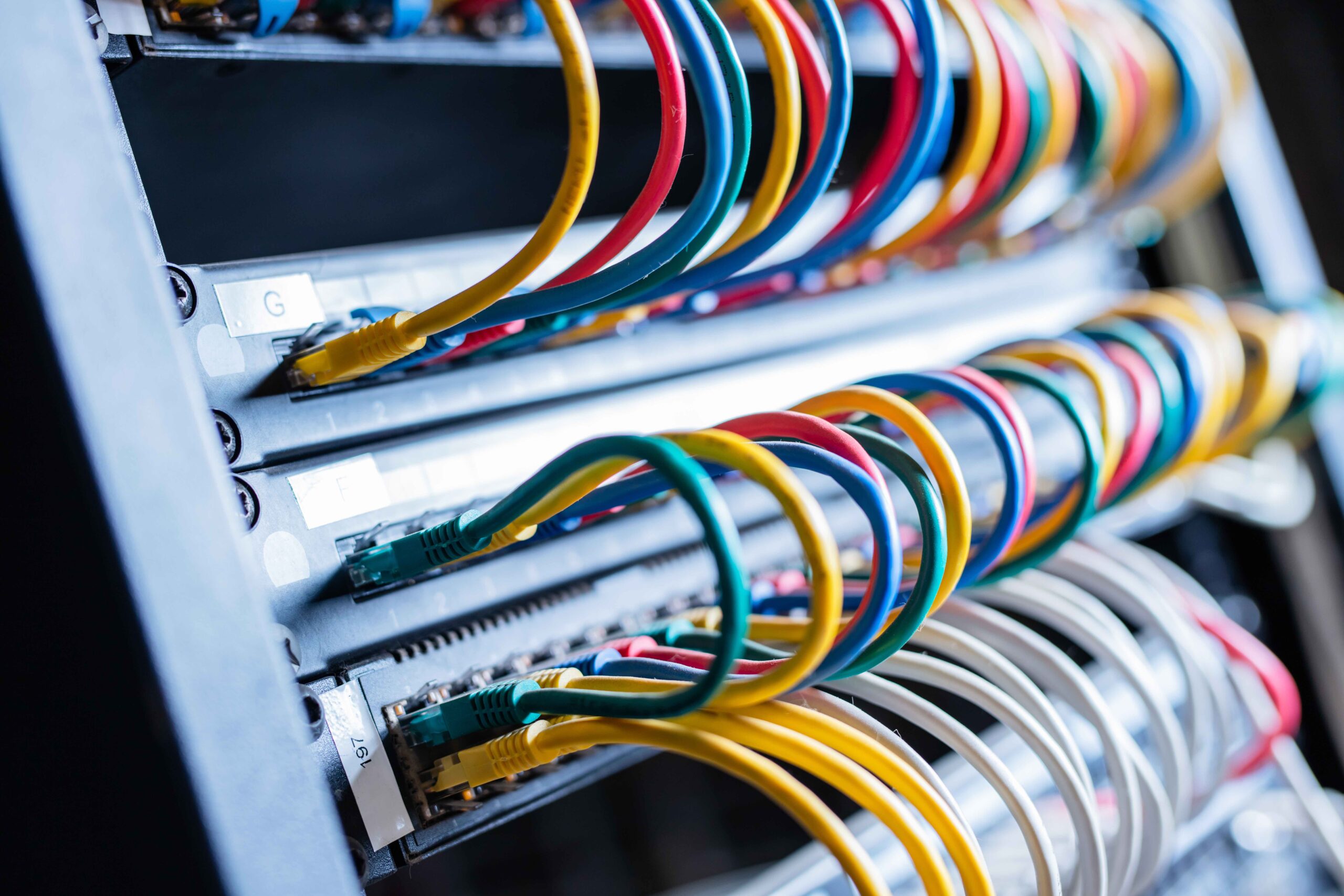Trying to compete with the big dogs can feel overwhelming at times for SMBs or private schools. You may not have the same sized building, staff, or capital, but maintaining the same level of technology and connectivity is crucial to your efficiency and ultimately your success. What keeps you in the game, yet is often overlooked, is structured cabling. In addition to learning the importance of avoiding the cable mess seen above, read on as I explain how structured cabling keeps you up and running and why it is the backbone of your connectivity.
What is Structured Cabling?
Structured cabling refers to a standardized approach to organizing and managing your IT infrastructure. It involves the installation of network cables, rack, patch panels, and network switches that form the backbone of communication within an organization. Here is a breakdown of those parts:
- Network cabling: This can be copper or fiber. Copper is typically used to connect from the wall-outlet to the patch panel. The current standard is Category 6 for 1Gigabyte speeds. Fiber is usually used to connect network closets between floors or buildings. Fiber supports longer distances and higher speeds but is more expensive.
- Patch Panels: These devices terminate all the cables that are run throughout the building. They enable you to label each run and then provide the ability to use a small network patch cable to connect them to a network switch. They also allow for easy expansion supporting 24 or 48 network runs.
- Network Rack: This can be wall mounted or free standing and is the centerpiece of your structured cabling. You can mount your patch panels and networking equipment as well as servers and any other communication equipment here. There are a variety of shapes and sizes so choosing the correct one depends on the location and amount of equipment.
- Network Switch: Each device that needs to connect to the network ultimately ends up connected to this device. A switch enables very high speed connections between devices and the internet. These typically come in multiples of 8, 24, or 48 ports and can provide network connectivity and, in some cases, power for devices like phones and wireless access points. There are many brands and configurations for these so choosing the right one requires some expertise.
Why Structured Cabling?
While it may seem mundane compared to some of today’s advanced hardware and software solutions, structured cabling lays the foundation for seamless operations and future scalability. Here are just a few of the reasons why it is so vital:
- Reliable Connectivity: Structured cabling ensures consistent and high-speed connections between various devices, such as computers, printers, servers, and other network components. This reliability minimizes downtime, boosts productivity, and enhances customer satisfaction. Poor or ad-hoc cabling often leads to difficulty troubleshooting performance or connectivity issues.
- Scalability: Your organization aims to grow, so your IT infrastructure must keep pace. Structured cabling allows for easy scalability, enabling businesses and schools to add new devices or expand their network effortlessly. Whether it’s hiring more staff, opening additional locations, or integrating new technologies, a well-structured cabling system accommodates these changes without significant disruptions or costly overhauls. Network racks and patch panels make your life easier for expansions.
- Organization: Disorderly cables can lead to chaos, both aesthetically and functionally. Structured cabling organizes the network infrastructure in a systematic manner, reducing clutter and confusion. With neatly labeled cables (as seen in the image below) and properly configured racks, troubleshooting becomes more manageable, saving time and frustration for IT personnel.
- Cost-effectiveness: While the initial investment in structured cabling may seem significant, its long-term benefits far outweigh the costs. Unlike make-shift cabling setups that require frequent repairs and modifications, structured cabling offers durability and ease of maintenance. With fewer downtime incidents and lower maintenance expenses, you will save money in the long run.
Conclusion
Although structured cabling may not be the flashiest or most interesting aspect of IT infrastructure; it is a crucial component for successful connectivity. By investing in a well-designed structured cabling system, SMBs and schools can eliminate the headaches surrounding a poorly installed solution and trust that the backbone of their connectivity is reliable.
As a managed IT service provider, we spend a lot of time troubleshooting problems. Some of the most difficult ones ultimately end up being a problem with the structured cabling. By having a qualified structured cabling installer handle the installation, you will eliminate what could be years of inconsistent or troublesome connectivity issues.
Need a technology partner to help you select and install structured cabling that gives you confidence in your IT infrastructure? Book a meeting with me to learn more, or sign up for a complimentary consultation.
For Businesses: https://sperapartners.com/business-solution-complimentary-consultation/
For Schools: https://sperapartners.com/Complimentary-Consultation/
Brian Hess
President, Spera Partners
To learn more about Spera Partners’ Structured Cabling, visit https://sperapartners.com/structured-cabling/











